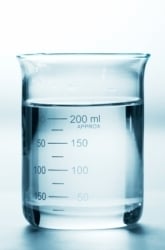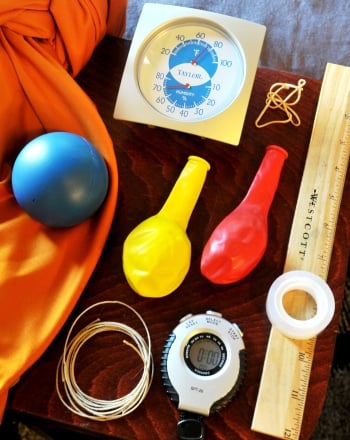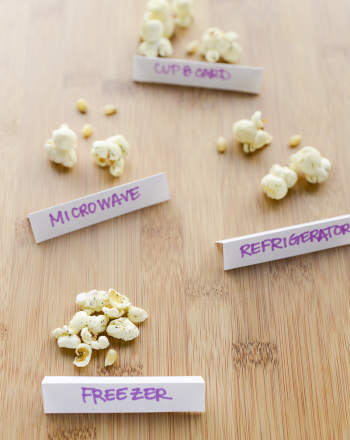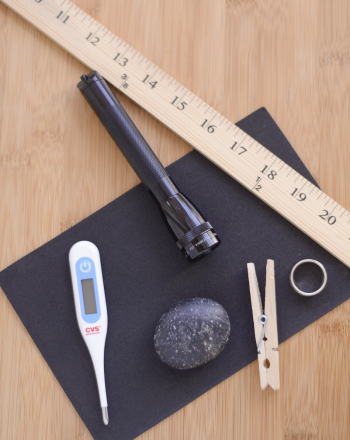Science project
Magnets and Temperature: Does the Temperature of a Magnet Affect its Strength?
Magnets are everywhere in our everyday lives! Hard drives that store data in your computer are coated with a magnetic material, the speakers in your headphones are powered by magnets, and your refrigerator uses magnets to hold its door shut. But did you know that magnets can only operate within a certain temperature range?
Problem
Observe the effect of temperature on the strength of magnets.
Does the temperature of a magnet affect its strength? How? Why?
Materials
- 3 or 4 identical neodymium bar magnets
- Tongs
- Water
- Stove
- Pot
- Ice
- Bowl
- Compass
- Ruler
- Tape
Optional:
- Dry ice
- Safety glasses
- Oven mitts
Procedure
Before testing each magnet:
- Set one magnet out on a table so that it reaches room temperature.
- Place another magnet in a pot of boiling water for 45 seconds.
- Place a third magnet in a bowl of ice water for 30 minutes.
- Optional: Using your tongs, oven mitt, and safety glasses, place a fourth magnet in a bucket of dry ice for 30 seconds.
To test the strength of each magnet:
- Place the compass on a flat table so that the needle facing right.
- Turn the compass so the needle lines up with the ‘0.’ Tape the compass to the table.
- Tape the ruler to the table so that its direction is perpendicular to that of the needle. The ‘0’ on the ruler should touch the ‘0’ on the compass.
- Take a magnet (using tongs for the heated and cooled magnets) and slide it along the ruler towards the compass. You want the needle to move towards the magnet, so if it is moving away, flip it over.
- Take note of the distance between the magnet and the compass when the needle of the compass begins to move. Compare the distances you recorded for all of your magnets. What do you notice? How do you think you can explain your results?
Results
Heating the magnet will cause the magnet to have a weaker magnetic field. Cooling the magnet will cause the magnet to have a stronger magnetic field. Cool magnets can be farther away from the compass than hot magnets when they make the compass’ needle move.
Why?
An important part of the relationship between magnets and temperature is the fact that heating the magnet causes its molecules to become more disorderly. Magnets are dipoles, which means they have an opposite charge, or magnetic direction, at each end. This is a result of most of the magnetic molecules facing the same direction. When we heat our magnets, those polar molecules start moving around. The average direction of the entire magnet’s polarity becomes a little bit messier because those magnetic molecules are no longer facing the same direction.
If magnets are heated to the Curie point, they lose their ability to be magnetic. The dipoles become so disordered that they can’t return to their original state. Curie points are very hot, and you would not be able to get your magnets to reach them without special lab equipment. For iron, the Curie Point is 1417°F.
As your boiled magnet cools from the boiling temperature of 100°C back to room temperature, it will return to its normal magnetic strength. Cooling the magnet even further to 0°C in ice water or -78°C in dry ice will cause the magnet to become stronger. Cooling causes the molecules in the magnet to have less kinetic energy. This means that there is less vibration in the magnet’s molecules, allowing the magnetic field they create to be more consistently concentrated in a given direction.
Education.com provides the Science Fair Project Ideas for informational purposes only. Education.com does not make any guarantee or representation regarding the Science Fair Project Ideas and is not responsible or liable for any loss or damage, directly or indirectly, caused by your use of such information. By accessing the Science Fair Project Ideas, you waive and renounce any claims against Education.com that arise thereof. In addition, your access to Education.com's website and Science Fair Project Ideas is covered by Education.com's Privacy Policy and site Terms of Use, which include limitations on Education.com's liability.
Warning is hereby given that not all Project Ideas are appropriate for all individuals or in all circumstances. Implementation of any Science Project Idea should be undertaken only in appropriate settings and with appropriate parental or other supervision. Reading and following the safety precautions of all materials used in a project is the sole responsibility of each individual. For further information, consult your state's handbook of Science Safety.











